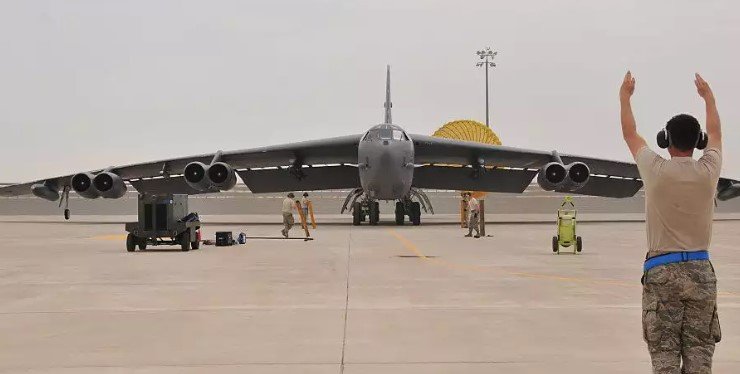The U.S. military launched airstrikes early Friday on two locations in eastern Syria linked to Iran’s Revolutionary Guard Corps (IRGC), the Pentagon said, in retaliation for a series of drone and missile attacks against U.S. bases and personnel in the region that began early last week.
The precision strikes were carried out near Boukamal by two F-16 fighter jets, and they struck weapons and ammunition storage areas that were connected to the IRGC, according to a senior U.S. military official. The official said there had been Iranian-aligned militia and IRGC personnel on the base and no civilians, but the U.S. does not have any information yet on casualties or an assessment of damage.
The sites were chosen because the IRGC stores the types of munitions there that were used in the attacks against U.S. bases and troops, a senior defense official said. The two officials briefed reporters after the strikes on condition of anonymity to provide details on the mission that had not yet been made public.
Defense Secretary Lloyd Austin said in a statement that the “precision self-defense strikes are a response to a series of ongoing and mostly unsuccessful attacks against U.S. personnel in Iraq and Syria by Iranian-backed militia groups that began on October 17.” He said President Joe Biden directed the narrowly tailored strikes “to make clear that the United States will not tolerate such attacks and will defend itself, its personnel, and its interests.”
He added that the operation was separate and distinct from Israel’s war against Hamas, which has also escalated tensions in the region.

U.S. faces increasing threats from Iranian proxies in Iraq and Syria
According to the Pentagon, there have now been at least 19 attacks on U.S. bases and personnel in Iraq and Syria since Oct. 17, including three new ones Thursday. Air Force Brig. Gen. Pat Ryder said 21 U.S. personnel were injured in two of those assaults that used drones to target al-Asad Airbase in Iraq and al-Tanf Garrison in Syria.
The U.S. has about 2,500 troops in Iraq and about 900 in Syria as part of the coalition fighting the Islamic State group. The U.S. also maintains a small presence at al-Tanf, near the border with Jordan and Iraq, to counter Iran’s influence in the area.
The U.S. has blamed Iran-backed militia groups such as Kataib Hezbollah and Asaib Ahl al-Haq for most of the attacks, which have used rockets, mortars, drones, and improvised explosive devices (IEDs) to target U.S. forces and facilities.
The U.S. has also accused Iran of providing advanced weapons and training to these groups, which are part of the Popular Mobilization Forces (PMF), an umbrella organization of mostly Shiite paramilitary groups that are officially part of Iraq’s security forces.
Iran denies any involvement in the attacks and says it only supports the PMF as part of its fight against terrorism.
U.S. seeks to deter Iran while avoiding escalation
The U.S. strikes reflect the Biden administration’s determination to maintain a delicate balance. The U.S. wants to hit Iranian-backed groups suspected of targeting the U.S. as strongly as possible to deter future aggression, possibly fueled by Israel’s war against Hamas, while also working to avoid inflaming the region and provoking a wider conflict.
The Biden administration has also expressed its willingness to rejoin the 2015 nuclear deal with Iran, which former President Donald Trump withdrew from in 2018, imposing harsh sanctions on Tehran. The deal, known as the Joint Comprehensive Plan of Action (JCPOA), aimed to limit Iran’s nuclear program in exchange for sanctions relief.
However, negotiations between Iran and other parties to the deal have stalled since June, when hardline cleric Ebrahim Raisi won Iran’s presidential election. Raisi has demanded that the U.S. lift all sanctions before Iran returns to compliance with the deal, while the U.S. has insisted that Iran must first reverse its breaches of the agreement.
Meanwhile, Iran has continued to enrich uranium beyond the limits set by the deal, raising concerns about its nuclear ambitions and regional influence.
The U.S. hopes that by demonstrating its resolve to defend its interests and allies in the region, it can persuade Iran to return to diplomacy and de-escalate tensions.






